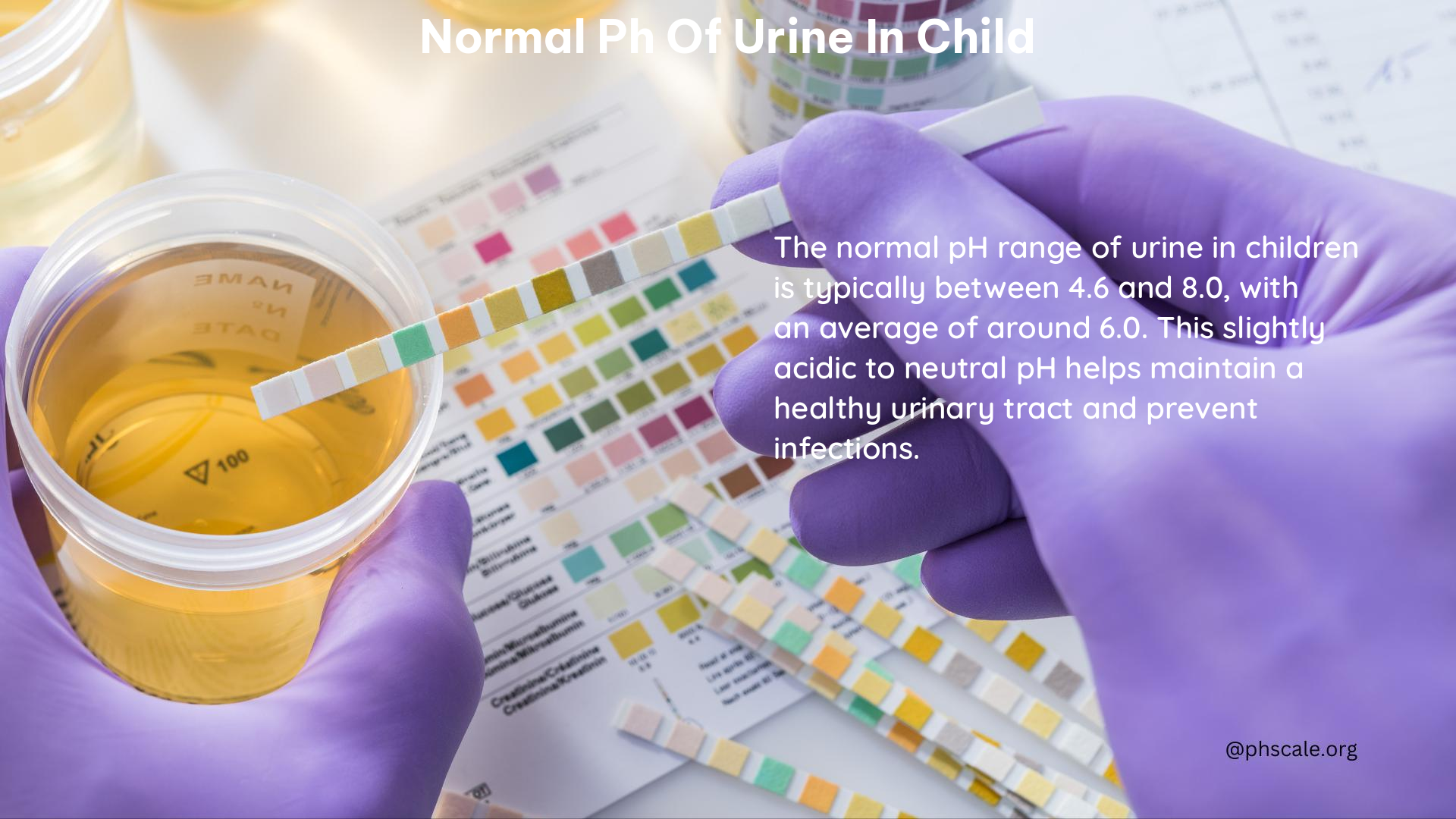The normal pH range of urine in children is generally considered to be between 4.5 and 8.0. This range is slightly wider than in adults, as children’s bodies are still developing and their kidneys are not yet fully mature. Understanding the normal pH levels of urine in children is crucial for maintaining their overall health and detecting any underlying medical conditions.
Age-Specific pH Ranges
The normal pH range of urine in children varies depending on their age:
| Age Group | Normal pH Range |
|---|---|
| Infants (0-12 months) | 5.0-7.0 |
| Toddlers (1-3 years) | 5.5-7.5 |
| Children (4-12 years) | 6.0-7.5 |
| Adolescents (13-18 years) | 6.0-7.5 |
It’s important to note that these ranges are general guidelines, and individual variations may occur.
Factors Affecting Urine pH Levels

Several factors can influence the pH levels of urine in children, including:
Diet
The foods and beverages a child consumes can have a significant impact on their urine pH. A diet high in protein, carbohydrates, and certain nutrients can make the urine more acidic, while a diet rich in fruits and vegetables can make it more alkaline.
Medical Conditions
Certain medical conditions can also affect the pH of a child’s urine. For example, kidney stones, diabetic ketoacidosis, dehydration, and acidosis can lead to acidic urine, while kidney failure, gastric suctioning, and respiratory alkalosis can result in alkaline urine.
Medications
Some medications, such as acetazolamide, can also influence the pH levels of a child’s urine.
Impact on Health
The pH of a child’s urine can have important implications for their health, particularly in the following areas:
Urinary Tract Infections (UTIs)
Acidic urine (pH < 5.0) can help prevent certain types of UTIs, but some bacteria, such as Proteus mirabilis and Pseudomonas aeruginosa, can thrive in alkaline environments.
Kidney Stones
Acidic urine can contribute to the formation of kidney stones, while alkaline urine can help prevent them.
Testing and Interpretation
To determine the pH of a child’s urine, a clean-catch urine sample is typically collected. This involves cleaning the genital area and collecting the urine midstream. The sample is then analyzed in a laboratory, and the results are interpreted by a healthcare provider in conjunction with other symptoms and test results.
Home Remedies and Lifestyle Changes
If a child’s urine pH is outside the normal range, there are some home remedies and lifestyle changes that can help maintain a healthy pH level:
Dietary Adjustments
Encouraging a balanced diet with a mix of acidic and alkaline foods can help maintain a healthy urine pH. For example, consuming more fruits and vegetables can help maintain an alkaline pH, while limiting sugary and processed foods can reduce acidity.
Hydration
Drinking plenty of water can help dilute the urine and maintain a healthy pH.
By understanding the normal pH range of urine in children and the factors that can influence it, parents and healthcare providers can work together to ensure the overall health and well-being of the child.
References:
- Urinalysis in Children and Adolescents – NCBI
- Association between urine pH and common uropathogens in children with urinary tract infections – ScienceDirect
- Urine pH Level Test: Purpose, Procedure, Results & More – Healthline
- Urine pH: Normal ranges and what they mean – MedicalNewsToday
- What to Know About a Urine pH Test – WebMD
